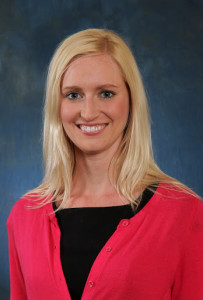 One of PerkettPR’s areas of expertise is servicing clients within the healthcare industry and because of this, we follow the top publications in this exciting industry. One of our favorite publications that we read religiously is Becker’s Hospital Review. We are thrilled to share an interview with its Editor in Chief, Lindsey Dunn.
One of PerkettPR’s areas of expertise is servicing clients within the healthcare industry and because of this, we follow the top publications in this exciting industry. One of our favorite publications that we read religiously is Becker’s Hospital Review. We are thrilled to share an interview with its Editor in Chief, Lindsey Dunn.
In your former life, you worked in PR. What made you move to journalism and how does your PR experience influence your role in the media?
I worked for a little over two years in advertising and PR before returning to grad school. I made the jump to journalism after grad school. I had always loved writing and it was my favorite part of PR, and when I had the opportunity to take a job (then, as a reporter), that would allow me to write full time, I jumped at it.
I think my experience in PR has shaped how I work with PR people and companies and has made me more open to the role they play in shaping media stories. There are a lot of businesses in the healthcare space that produce (and share with the media) excellent surveys, studies, reports, etc., that we do not have the resources to create on our own. Journalism as we know it is going through a huge transition as we work to create excellent coverage with limited resources. At the same time, you see more active efforts by brands to be known as “thought leaders” through reports they share with the media, and their own custom content. This melding of independent journalism and content marketing worries a lot of people, but my belief is that consumers are smart. We have a journalistic responsibility to 1) make clear the source of content and 2) speak the truth. Most content marketing still abides by this; even it is more promotional than traditional journalism. So my hope is that as we transition to new business models for journalism, independent trade publications like ours will continue to thrive alongside other models.
Favorite Chicago restaurant/bar/dive and why?
I love Brick’s Pizza in Lincoln Park. It has great pizza and an even better beer list. It’s located underground, in a window-less, very old-school setting. It’s actually right next door to a now-defunct bar called The Catacombs. I mention that only so you get a true feel for the place. It’s always packed and they don’t take reservations, but it is a can’t-miss spot in Chicago’s often cold weather. There’s something cozy about going underground in the winter for hot pizza and cold beer. I recommend trying the “Grease Fire,” but it’s not for the faint of heart.
Becker’s Hospital Review publishes a ton of content – how do you keep up?
I don’t! I sure try, but I am certainly not the expert on everything. My role is more to educate and empower our reporters on the voice we want our publication to have and the stories that are important to pursue. The reporters are really the experts on each area they cover. If I have a question on a meaningful use, I know our HIT reporter will have an answer, without looking it up. Same for our M&A reporter, who could probably tell you every transaction in the past year. They are in charge of being experts on the beats they cover, and they, not me, ensure our readers have the most relevant news and feature articles for the areas they oversee.
Of course, I edit and guide their features, we talk about angles, sources, and all those other things, but I’m really more of a mentor that oversees the overall direction of the pieces on the website. I have my hand a bit more directly in the editorial development of our e-newsletters and print issues, but overall, they are the ones ensuring our coverage hits on the most relevant issues.
How has Obamacare impacted Becker’s editorial coverage? Or has it?
It has certainly given us lots to write about! House Republicans, who are now making their 37th attempt to overturn the healthcare reform law, recently put out a report stating that enacting ObamaCare will take 190 million hours per year. The point being, there are a lot of new regulations that have to be created, commented on, revised and released to enact many individual components of the law. We report on each of these rules and analyze how the new regulations contained in the rules could impact hospitals and healthcare providers. It’s an obligation we have to our readers.
ObamaCare also is a catalyst for a lot of the other trends we are seeing in the industry: consolidation, pay-for-performance, unique agreements between providers and payors. Each time a hospital merges, we cover it. Each time a payor starts an accountable care organization, we cover it. There’s certainly a lot for us to be on top of.
Based on your many interviews with hospital administrators, what’s keeping them awake at night?
Without a doubt, it is the challenge of the transition from moving from a fragmented, fee-for-service delivery system to a value-based one. In a fee-for-service system, your doctor is paid for every service he or she provides to you. As we look 5-10 years into the future, it’s more likely your physician will receive a set fee based on your individual risk to oversee care for you for the year. If they keep you relatively healthy and out of the hospital, they make money. If your condition gets worse or isn’t managed properly, they lose money. It’s a whole new business model for hospitals, and they can’t make the shift overnight. I think the concern of CEOs and CFOs of hospitals is how quickly they should shift to this new model, given that insurers still, for the most part, pay on a fee-for-service basis.
What keeps you awake at night?
To be honest, I sleep pretty well. Of course there are the occasional times when I have that running mental list that keeps me turning, but for the most part, I do my best to enjoy my time after I leave the office without stressing about things I can deal with tomorrow. I’m a big fan of “The Energy Project,” and first discovered it when I read an article by its founder, Tony Schwartz, in the Harvard Business Review. He coaches companies and executives about how closely productivity is linked with getting enough sleep and taking time away from the office to recharge. It’s kind of crazy that this guy has becomes a business guru by simply telling people to stop obsessing over work, but so many people do! For writers, a key part of being great at what you do is being creative. If you’re tired, hungry and at a desk for 12 hours a day, you’re probably not going to be churning out your best work. I encourage our team to leave the office for lunch, take a walk around the block in the afternoon if the weather is nice, and leave at 5 (if their work is done, of course). You can actually be more productive and produce better work if the hours you work are more focused and without distraction.
Have you always worked in healthcare media? Why?
As I mentioned earlier, I came from the PR side, and there I worked on consumer product accounts. Becker’s was my first role in healthcare media. The reason I was able to get my initial job here was due, in part, to some experience I had in grad school editing academic medical papers that were eventually submitted and accepted to peer-reviewed journals.
Despite not actively choosing healthcare media, I couldn’t be happier. I always knew I wanted to work in business media, versus consumer, and healthcare is a subsector of that. I’m lucky to be covering it in such an exciting time. Hospitals are going through transformational change and looking to publications like ours to help keep them abreast of the changes and inform their decision making. Although it’s a several degree leap from what I do to the patient who receives great care, I do believe that the content we put out every day ultimately helps hospitals delivery higher quality, more affordable care.
Biggest pet peeves? Work and personal.
I am a very to-the-point person, so I’m not a huge fan of meetings. Without an agenda (and more importantly a leader that keeps people on point), they sometimes turn into a “let’s talk about everything about this project” fest, and you have your busy writer on deadline who is thinking “this is a waste of my time, I just need to write.” Meetings are sometimes necessary — for example, to share our editorial strategy, goals, provide feedback, etc., but when I go to one that starts getting away from its purpose, it’s something that bothers me.
Personally, I don’t like when people are late. Emergencies arise of course, but I people who are chronically late definitely unnerve me.
You get pitched by PR pros every day – having been on both sides of the equation, do you think you’re more accepting of the PR pitch than others or more critical?
I think I’m friendlier than your average editor when responding to pitches, especially calls. I used to get some really rude voices on the other end back when I was an intern pitching. I too much prefer email, but I at least try to not ruin the day of the person on the other side. I think of my 20-year-old self calling up some middle-aged tech reporter and all the anxiety I felt!
That said, I really wish PR people stood up to their clients more and made a case for smarter pitching, both in terms of angle and targeting. For example, if a product gets an award for being “green,” most outlets don’t consider that newsworthy, yet I get tons of these types of email pitches every week. Companies are paying agencies for their expertise, yet the PR leaders are afraid to say, “Hey, we can draft, revise and go through the approval process with you and your attorneys to write a release on this and then charge you to distribute it on the wire, and then charge you for 15 hours for our AAEs and AEs to pitch it. Or, let’s just have our AE send a quick, informal email or Twitter message to the three or four reporters at the two outlets that actually cover this kind of news. The latter will save you, probably $2,500.” I am making up the number, but you get the idea. I guess it means fewer billings for the agency, but wouldn’t the top companies flock to someone who wasn’t afraid to at least propose this approach to them?
What is next for you for the remainder of 2013?
Professionally, I am focused helping us meet our key growth goals for the year, which are 400,000 visitors per month to our website and 80,000 subscribers to our E-weeklies. We are really close on the website goals, with just about 385,000 visitors last month. So, growing our E-weeklies is a key priority now. Part of our growth is organic, of course, but I am also trying to work with our team here to develop an active social media plan, and also more actively market our brand to healthcare executives. We have a slew of journalists here who really are poised to be thought leaders in the areas they cover, so now we just need to look for opportunities for them to get in front of our audiences in this way.
Personally, I definitely want to take more time to give back. We do quarterly service projects through Becker’s, but I’d like to do more individually. I’ve done mentoring before, and it is so rewarding. I plan to get involved with that again after summer, when the new school year starts. I volunteer for a program that works with at-risk youth specifically on their writing skills, so it’s right up my alley. Working with teenagers on their personal essays is probably some of the most challenging, satisfying editing I’ve ever done.




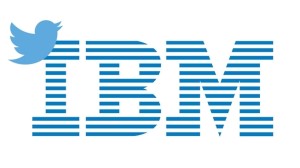




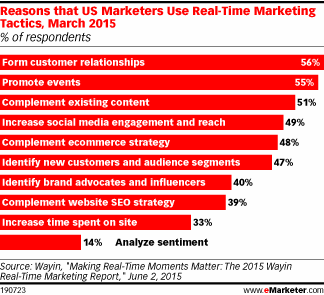

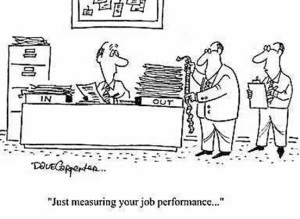
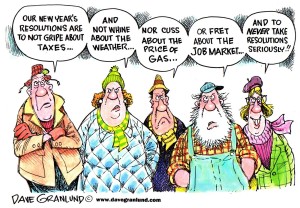


 This week’s interview is with Kate Gamble, Managing Editor of
This week’s interview is with Kate Gamble, Managing Editor of 
 One of PerkettPR’s areas of expertise is servicing clients within the healthcare industry and because of this, we follow the top publications in this exciting industry. One of our favorite publications that we read religiously is
One of PerkettPR’s areas of expertise is servicing clients within the healthcare industry and because of this, we follow the top publications in this exciting industry. One of our favorite publications that we read religiously is